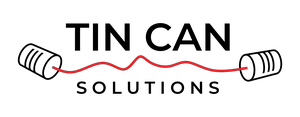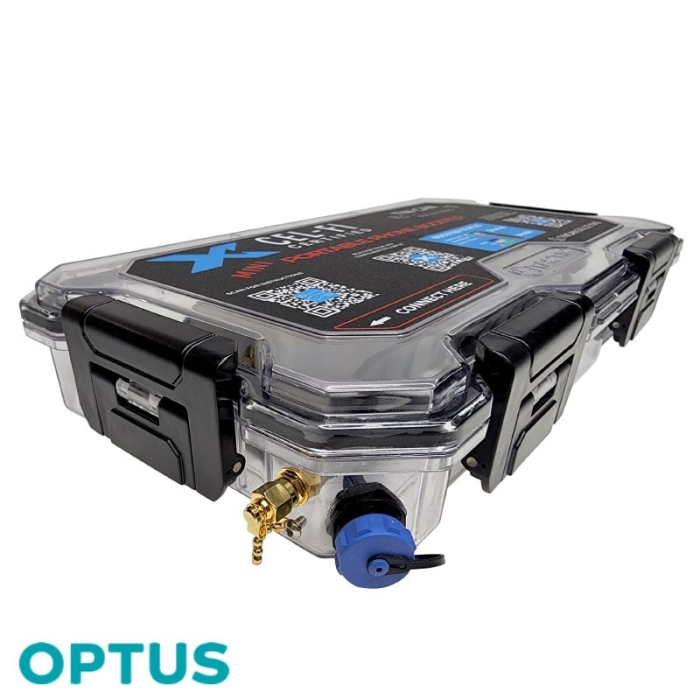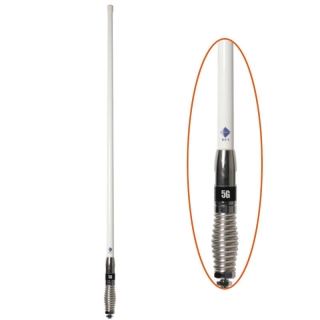Portable CelFi GO G31 Optus Phone Booster in Mini Weather Resistant Case
In stock
Portable Cel-Fi GO G31 phone repeater for Optus in a compact weatherproof enclosure made by Tin Can Solutions.
This is the ultimate portable phone repeater that you can use in your car, boat or home and easily switch between any of them by just unplugging the power cable and external antenna, taking to your other car, boat or home and plugging in there.
Just grab an antenna for your application and you're right to go, or see our kit builder.
See the status of the repeater via the Booster Status window to see what it's boosting, which mode it's in and if it's searching for service.
Scan the QR codes on the front for easy to read online instructions, and direct links to download the Cel-Fi WAVE and MyWave apps.
When finished just pack it up and put in on the shelf until next time.
FAST DELIVERY
On all in-stock items
This is the ultimate portable phone booster that is compact and easy to use.
We were continually asked for a portable Cel-Fi booster kit that can be used in the car, in the boat, in the truck and tractor, and at home so we professionally made it and with Tin Can Solutions being Cel-Fi Certified Enterprise Installers, you get the best of the best.
The case itself holds the Cel-Fi GO and the Server antenna (Antenna that communicates with your phones).
On the end of the portable cell phone booster is an SMA connection with weatherproof dust cover for the Donor Antenna (Antenna that communicates with the Cell Towers) and also a power socket/inlet with an IP68 weatherproof cover that the power cables plug into.
The mini portable booster kit comes with a 4.5m DC power cable with cigarette lighter adaptor for use on 12V and 24V. You can also purchase separately the 240V AC power adaptor that plugs straight into the power socket on the portable booster. This means that all you need to do is have the 240V cable and stationary antenna plugged in at the house or office and when you want to take the booster out with you, just unplug it and then plug it into the other car, boat, tractor or whatever and where-ever you need it.
For this kit to work, you will need a donor antenna and you'll need to choose a Cel-Fi G31 to go in it. We sell these separately because there are so many options for different applications.
You need to select the external donor antenna that will suit your requirements and there are 3 important factors to consider when selecting the CORRECT antenna which are in order of importance: Options for Donor Antenna Gain: Around and close-ish to town or where the cellular towers are located in built up or hilly areas. Perfect for in the bush not that far out of town where signal is scratchy. Shorter distance but much better in hilly/bushy terrain. This is an all round antenna suitable for further out of town but slightly flatter terrain. This is the antenna gain that we (Tin Can Solutions Owners) use and recommend which we have been able to achieve an extra 50km useable Telstra service compared to another phone on Telstra not connected to the Cel-Fi. We have been able to run our business remotely by taking phone calls and process orders in places that we normally would't be able to without this setup. This antenna is a good all-rounder for marine/boating applications. Suitable for flat/undulating terrain where longer distances are required but there's no mountains around blocking the signal. Perfect for people who live and work in these locations or for people who are going to do a fair bit of travel in these areas. This antenna is a good choice for marine/boating applications requiring that bit further distance. Suitable for VERY flat/undulating terrain where much longer distances are required and there's definitely no mountains around blocking the signal. An option for people who live and work in really flat locations or for people who are going to travel in these areas. For people who don't live and work in these areas, we recommend setting up the system with a 6.5dBi antenna and then having a spare 8.5dBi whip to swap over when travelling into really flat terrain. This antenna is a great choice for marine/boating applications for when a long way out at sea, but in flat seas only because when the boat rocks from side to side, the signal beamwidth being broadcast from the antenna is very flat and will also rock up and down sending the signal into the sky and the water which will cause drop-outs. The collinear donor antennas that we supply for mobile/moving applications come in 3 versions. We also stock the RFI CSM600 magnetic base antenna for applications where you want to take the unit between vehicles or structures. The magnetic base cellular LTE antenna is only recommended for highway/sealed roads use where the signal is scratchy such as 1 bar of service that you need to get that little bit of extra service but don't want to mount an antenna to your vehicle. The antenna gain is 2.5dBi to 4dBi so it is suited to shorter distances where service intermittently breaks up between mobile phone towers. This solution will improve the mobile phone service when there is a sniff of service outside. There is a highly informative and totally independent review/article on testing of some well known brands of Cel-Fi Go compatible antennas and which ones performed the best. This link is to an external website called "CHOICE" and we have absolutely no affilliation with the author or the website. click here for the article which we think is a worthy read. This article clearly shows that the RFI antennas outperform other brands by over 10km and this is the exact reason why we believe in RFI Antennas to which we are an Authorised RFI Dealer in Capalaba Brisbane and a Capalaba QLD stockist of RFI antennas. We believe RFI antennas are simply the best available on the market.Mobile Antenna Selection
Gain Suitable for 5dBi 6.5dBi 7.5dBi 8.5dBi So which Antenna do you get?
Stationary Building Fixed Antenna Selection
You need to select the external donor antenna that will suit your requirements and there are a few important factors to consider when selecting the CORRECT antenna:
- Directional or Omni-Directrional Antenna
- Antenna Gain
- Antenna Types
1. Directional or Omni-Directional
An "Omni-Directional" antenna means that the antenna transmits and receives its signals in a 360 degree pattern. The signal radiates from the antenna just like dropping a stone in a pond and the ripple that is created is pushed out in a uniform 360 degree pattern. These antennas will collect any and all signals within the antenna frequency range that go past the antenna, which means that they also collect a lot of unwanted signals which is referred to as noise. Excess noise will reduce the quality of the signal and reduce the effectiveness of the system.
A "Directional" antenna is one that transmits and receives its signals in and from the direction that it is pointed. Directional antennas are used for a couple of reasons which are to maximise the signal strength and quality, and also to reduce the amount of unwanted signals (noise) from other sources such as other cell towers.
Both antennas have their place and we use both of them in different applications.
If there is fair to good cellular signal strength outside the building and the system is in a domestic installation, then an omni-directional antenna will be sufficient. The omni-directional antennas are easy to install and there is hardly any maintenance required once they are up in the air.
In areas where there is low signal strength outside, areas where there is lots of RF noise from other sources, long distances between the antenna and cell tower or commercial applications then we recommend a directional antenna to aim at the cell tower so that the signal strength and quality can be maximised whilst minimising the unwanted noise. These antennas are harder to install as they need to be pointed at the cell tower and tuned in to get the best signal strength, quality and reduced noise.
If you want to know more, read this Wikipedia article on Directional Antennas or this Wikipedia article on Omni-Directional Antennas.
2. Antenna Gain:
The lower the gain, the wider and more mushroom style the signal pattern is. Low gain antennas are suited to hilly / built up areas and shorter distances.
The higher the gain, the more directional and pin-pointed/flatter the signal pattern is. Higher gain antennas are suited to flatter country and longer distances and line of sight point to point applications.
3. Antenna Types:
- Compact - These antennas are for applications where it is hard to mount an antenna somewhere outside the building or the larger antenna types are not wanted for visual appeal. The gain on these antennas is normally very low so the cell tower must be in close range with good signal outside.
- Collinear - These antennas are an omni-directional antenna, and our collinear donor antenna selection is normally in the form of a fixed whip style antenna just like you see on the bullbar of 4WD's.
- LPDA - Log Periodic Dipole Array antennas are a wideband antenna which we use in the cellular spectrum of 700MHz to 3800MHz frequency range. At the time of writing this, this frequency range covers 3G, 4G and 5G systems. These are a high gain antenna, but not as high as the Yagi, and are suited to directional applications where there is a fair distance between the antenna and cell tower. See the Wikepedia article here.
- Yagi - This is a narrowband antenna with high gain used for long distances and targeting a particular band within a narrow frequency range. Normally we use these to target band 28 on 4G and band 5 on 3G which fall in the 700MHz to 900MHz frequency range. See the Wikepedia article here.
So which antenna do you get for a mobile phone repeater?
Domestic Installations:
For a single cellular repeater system in suburbia where there is good signal outside and nothing inside the home, we normally recommend a 6.5dBi omni-directional colinear antenna mounted up on the roof on a short mast.
In areas where the cell towers are at a greater distance from the antenna and a directional antenna may not work because of hills being in the way, we recommend an 8.5dBi omni-directional colinear antenna mounted up on the roof on a short mast.
Rural Installations:
A lot of our rural clients are located many km's away from their closest cell tower and need to use a directional antenna with higher gain. The most common is an 11dBi LPDA directional antenna which we use a lot on cellular distributed antenna system installations that are a fair distance from the cell tower and we need to target the signal for optimal performance.
Where the site is located a long way from the cell tower in flat country, we recommend a 15dBi Yagi high gain highly directional antenna. These antenna are narrowband and will only work on their specified frequency range so care is needed when specifying a Yagi antenna, but they perform very well in these applications. We have been know to improve mobile phone signals at properties that can't make phone calls with the phone continually dropping out due to poor phone signal, to seamless phone calls and around 30Mb/s data download speeds which is more than ample to stream movies.
Commercial Applications:
We recommend that you contact us for a commercial system so that we can have a chat to you about your requirements and what you want to achieve from the system.
Otherwise taking all the above into account, we recommend an LPDA directional antenna with the gain dependent on the location.
Mountain Country:
you will need to contact us for locations that are shaded from cell tower signals by mountains and large hills so that we can perform a site survey to ascertain if a cellular system is right for you.
Note: This is a general guide to help our customers understand what may be required for their site. Each site and/or application is different and that's why we always recommend to conduct a site survey before specifying or installing an antenna system. If you are unsure or do not know much about antennas, then we recommend that you contact us and get professional advice for your application before you purchase any antennas or systems from us or anywhere else.
If you have any questions, just contact us below and we'll help you out with the correct antenna selection.
| Cellular Carrier | Optus |
|---|---|
| Input Voltage | 9.6 to 28.8 VDC |
| RF Gain | Up to 100dB gain |
| Included Antenna | RFI T5/T7 Patch Antenna |
| Electrical Plug Socket | Cigarette Lighter Adapter with LED Indicator |
CONTACT US
We're here to help!
If you've got any queries, call us on +61 7 3180 3840, or flick us a message below.











The information below is required for social login
Sign In
Create New Account